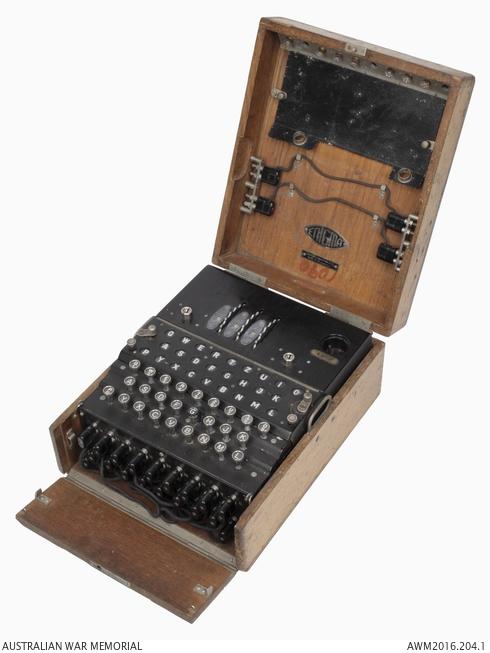Enigma
ENIGMA was the codename for the cipher machine developed from a design patented by a Dutchman, Hugo Koch, in 1919.
Impressed by its security, which was based on a high level of statistical complexity, the German Army acquired all rights to the machine and adapted it to the needs of its modern military forces. It became the standard cipher machine for Germany's military services, intelligence agents, and secret police. It was used at all levels, from high command to front-line tactical units including individual aeroplanes, tanks, and ships.

German Enigma machine
The Enigma machine was based on a system of three or four rotors that substituted cipher text letters for plain text letters. The rotors would rotate in conjunction with each other, much like an automobile odometer, thus performing varying substitutions. In order for the recipient to decipher the message, they would need to know the initial settings of the rotors, and then enter the cipher text into their own machine to find the plain text.
The Poles were reading some Enigma traffic by 1932, the French in 1938 and the British in 1940.
ULTRA was the codename given to the new, highly secret intelligence produced by the decryption of intercepted German radio messages enciphered by the Enigma machine cipher.
The Enigma machine on display in the Australian War Memorial’s Second World War Gallery is the common three-rotor Wehrmacht and Luftwaffe model. This machine has additional stecker connectors at the front that made the encipherment even more complicated.
Further Information
- Breaking Enigma: Mike Cecil, "A Crucial Edge", Wartime 15, Spring 2001, 25-27
- Alan Turing: cryptanalyst
This site is maintained by Andrew Hodges, author of Alan Turing: the Enigma, Princeton University Press, Princeton, N.J., 2012